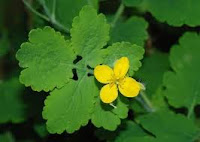HEMLOCK, CONIUM MACULATUM
Hemlock is also correctly termed Poison Hemlock. It is native to Europe, parts of North Africa, Iran and temperate regions of Asia. It is famous because it was the main constituent of the potion given to Socrates as it was to other criminals in ancient Greece.
Plato gives us this description of the death of Socrates which aptly describes how Socrates died.
”Socrates walked about, and presently, saying that his legs were heavy, lay down on his back – that was what the man recommended. The man – he was the same one who had administered the poison – kept his hand upon Socrates, and after a little while examined his feet and legs, then pinched his foot hard and asked if he felt it. Socrates said no. Then he did the same to his legs, and moving gradually upward in this way let us see that he was getting cold and numb. Presently he felt him again and said that when it reached the heart, Socrates would be gone.”
 Hemlock is widespread but few deaths seem to occur, perhaps because of the foetid smell of the crushed leaves, which has been likened to that of a mouse. It is similar to Sweet Cicely and Cow parsley to which it is related. It is a member of the Apiaceae or Umbelliferae family of plants which also includes carrots, parsnips, parsley and fennel. It is easy to distinguish from other wild plants because of the purple patches on its stems and by the smell of the bruised leaves. Its seeds resemble caraway seeds, but are not ridged in quite the same pattern.
Hemlock is widespread but few deaths seem to occur, perhaps because of the foetid smell of the crushed leaves, which has been likened to that of a mouse. It is similar to Sweet Cicely and Cow parsley to which it is related. It is a member of the Apiaceae or Umbelliferae family of plants which also includes carrots, parsnips, parsley and fennel. It is easy to distinguish from other wild plants because of the purple patches on its stems and by the smell of the bruised leaves. Its seeds resemble caraway seeds, but are not ridged in quite the same pattern. The toxic principle components of this plant are g-coniceine and coniine, the latter being the most toxic. It has been used in medicine as a sedative and an antispasmodic among uses.
 Although the whole plant is poisonous it has been employed in medicine by knowledgeable physicians. The lethal dose, is only 1 per cent of body weight, so don’t be tempted to investigate its poisonous properties. It was used as medicine both by the ancient Greeks and the Arabs who clearly understood its nature and used it cautiously for the treatment of a number of diseases including pains in the joints.
Although the whole plant is poisonous it has been employed in medicine by knowledgeable physicians. The lethal dose, is only 1 per cent of body weight, so don’t be tempted to investigate its poisonous properties. It was used as medicine both by the ancient Greeks and the Arabs who clearly understood its nature and used it cautiously for the treatment of a number of diseases including pains in the joints. Some of the symptoms of poisoning by hemlock are: - a burning sensation in the mouth; excessive salivation; diarrhoea; muscle tremors; muscular weakness; dim vision and frequent urination.
 In Mediaeval times it was used mixed with betony and fennel seeds for treatment against the bite of rabid dogs.
In Mediaeval times it was used mixed with betony and fennel seeds for treatment against the bite of rabid dogs. The name hemlock comes from the Anglo-Saxon, hem meaning border or shore, and leac meaning plant or leek. In Anglo-Saxon healm also means straw and the name could also have come from this.
It is highly poisonous and should not be touched.
 People we know have recovered after using this remedy, so if you have dengue fever, try this remedy. You can also blend the 5 leaves after de-veining them and eat the pulp, 2 tablespoons as directed above.
People we know have recovered after using this remedy, so if you have dengue fever, try this remedy. You can also blend the 5 leaves after de-veining them and eat the pulp, 2 tablespoons as directed above.
















